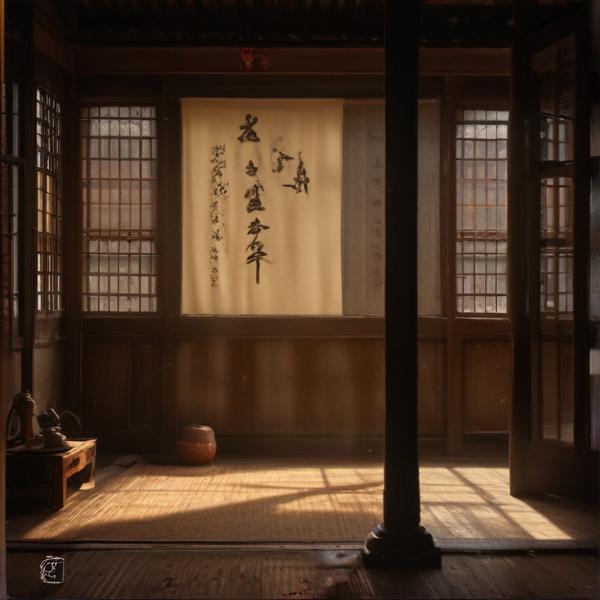基本信息 (Basic Information)
含义与用法 (Meanings & Usage)
中文核心释义 (Core Chinese Meaning): 用来砍、刺的双刃兵器,常指冷兵器时代的长直双刃武器。
英文核心释义 (Core English Meaning): sword; a double-edged blade weapon, especially used in ancient times.
象形意义 / 为何这么写 (Pictographic Meaning / Writing Rationale)
文言文释义 (Classical Chinese Meaning)
与现代意义相近,均指双刃长兵器,即剑。Similar to modern meaning, both referring to a double-edged long weapon, i.e., a sword.
深入学习 (In-depth Study)
字源故事 (Origin Story)
字形演变 (Character Evolution)
常用词语和例句 (Common Words & Examples)
宝剑 (precious sword; treasured sword)
他得到了父亲传下来的宝剑。
Eng: He received the treasured sword handed down from his father.
剑客 (swordsman)
这位剑客武艺高强,名震江湖。
Eng: This swordsman is highly skilled and renowned in the martial world.
剑术 (swordsmanship)
她从小练习剑术,动作优美流畅。
Eng: She has practiced swordsmanship since childhood, and her movements are graceful and fluent.
相关成语 (Related Idioms)
宝剑锋从磨砺出
Meaning: A sharp sword is forged through repeated sharpening (Great ability comes from hard training).
多语言翻译 (核心释义) (Translations (Core Meaning))
- French: épée
- German: Schwert
- Spanish: espada
- Italian: spada
- Portuguese: espada
- Russian: меч
- Arabic: سيف
- Persian: شمشیر
- Dutch: zwaard
- Polish: miecz
- Vietnamese: kiếm
- Ukrainian: меч
视频学习资源 (Video Learning Resources)
通过以下链接在热门视频网站搜索 "剑" 的更多讲解:
Search for more explanations of "剑" on popular video sites:
- 在 Bilibili.com 搜索 "剑 字源 说文解字" (Search on Bilibili)
- 在 YouTube.com 搜索 "剑 character origin etymology" (Search on YouTube)
网络参考 (Web References for "剑") ()
网络内容摘要 (Web Content Summary):
剑(拼音:jiàn)是常用汉字,本义为双刃长条形冷兵器,即中国历史上的“sword”。 Jian (pinyin: jiàn) is a commonly used Chinese character, referring primarily to a double-edged straight sword—a historical weapon in China.
-
字形起源与演变: “剑”最早见于西周金文,是形声字,古时主要写作“劍”,左边为“刀”旁,右为“僉”声,后简化为“剑”,右边为“佥”。 Origin and evolution: The character first appeared in Western Zhou bronze inscriptions, originally written as “劍” (with “刀” meaning "knife" on the left and the phonetic "僉" on the right). In modern simplified Chinese, “劍” is simplified to “剑”.
-
文化背景: 剑在中国文化中极具重要意义,常作为勇武或正道的象征。在武侠、古代文学、艺术等领域经常出现。 Cultural context: The sword holds deep significance in Chinese culture, symbolizing bravery and virtue. It often appears in martial arts, classical literature, and the arts.
-
常用词与成语: 常见搭配有“宝剑”(precious sword)、“剑客”(swordsman)、“剑术”(swordsmanship)。常见成语如“剑拔弩张”(tense confrontation),意为形势十分紧张。 Common words & idioms: Often used in words like “宝剑” (precious sword), “剑客” (swordsman), “剑术” (swordsmanship). Idioms include “剑拔弩张”—meaning a tense and confrontational situation.
-
易混淆点: “剑”为简体,“劍”为繁体。请注意区分,并避免与“刀”(single-edged knife)混淆。 Easily confused: “剑” is the simplified form; “劍” is traditional. Distinguish from “刀” (which means "knife" and is single-edged).
剑(汉语文字)_百度百科
剑(拼音:jiàn)是汉语一级通用规范汉字(常用字)。此字初文始见于西周金文,形声字,古字形从金佥声,后改为从刀佥声。本义指一种随身携带的双面有刃的兵器,呈长条形。古籍中又可活用为动词,指用剑砍或刺杀。
剑字形演变字源_汉字「剑」_剑的甲骨文_剑的金文_金文编_甲骨文编
」篆文與漢碑隸書作「劒」,從刃、僉聲。楷書承籀文、戰國文字、篆文與漢代帛書寫作「劍」,從刀、僉聲。六書都屬於形聲。臺灣標準字作「劍」,規範字作「剑」,「僉」改為「佥」,是偏旁類推。 汉字:「剑」 字形演变 字源演变
更多图片 (剑 More Images) ()
